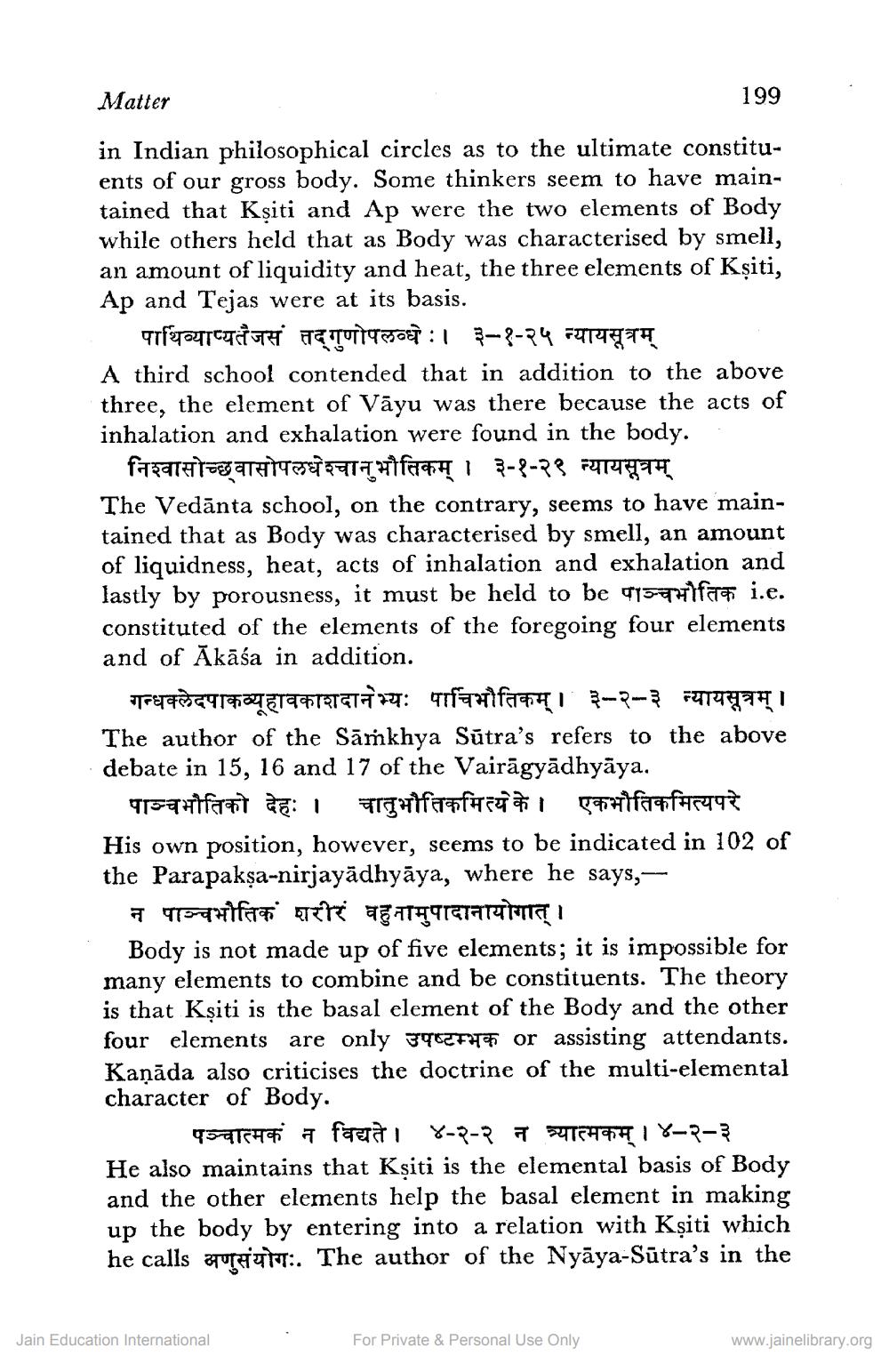________________
Matter
199 in Indian philosophical circles as to the ultimate constituents of our gross body. Some thinkers seem to have maintained that Kșiti and Ap were the two elements of Body while others held that as Body was characterised by smell, an amount of liquidity and heat, the three elements of Kșiti, Ap and Tejas were at its basis.
पार्थिव्याप्यतैजसं तद्गुणोपलव्ध :। ३-१-२५ न्यायसूत्रम् A third school contended that in addition to the above three, the element of Vāyu was there because the acts of inhalation and exhalation were found in the body. __निश्वासोच्छवासोपलधेश्चानु भौतिकम् । ३-१-२९ न्यायसूत्रम्
The Vedānta school, on the contrary, seems to have maintained that as Body was characterised by smell, an amount of liquidness, heat, acts of inhalation and exhalation and lastly by porousness, it must be held to be 01573faa i.e. constituted of the elements of the foregoing four elements and of Akāśa in addition.
गन्धक्लेदपाकव्यूहावकाशदानेभ्यः पाचिभौतिकम्। ३-२-३ न्यायसूत्रम् । The author of the Sāṁkhya Sūtra's refers to the above debate in 15, 16 and 17 of the Vairāgyādhyāya.
पाञ्चभौतिको देहः । चातुभौतिकमित्ये के। एकभौतिकमित्यपरे His own position, however, seems to be indicated in 102 of the Parapakșa-nirjayādhyāya, where he says, -
न पाञ्चभौतिक शरीरं बहुनामुपादानायोगात्।
Body is not made up of five elements; it is impossible for many elements to combine and be constituents. The theory is that Kșiti is the basal element of the Body and the other four elements are only 392FH or assisting attendants. Kaņāda also criticises the doctrine of the multi-elemental character of Body.
पञ्चात्मकं न विद्यते। ४-२-२ न त्र्यात्मकम् । ४-२-३ He also maintains that Kșiti is the elemental basis of Body and the other elements help the basal element in making up the body by entering into a relation with Kșiti which he calls auch. The author of the Nyāya-Sūtra's in the
Jain Education International
For Private & Personal Use Only
www.jainelibrary.org




